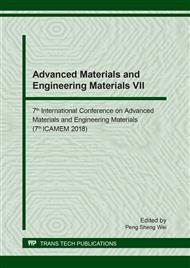p.251
p.256
p.262
p.268
p.272
p.277
p.282
p.289
p.294
The Culturing Optimization of Bioleaching of the Lead-Zinc Tailings from Different Depths
Abstract:
This study was a continuation of previous work designed to further explore the effect of different culture condition on the recovery of the valuable metals by bacteria. The experiment focused on the Nandan lead-zinc tailings from different depths. First of all, the study systematically performed multi-elements analysis. Subsequently, the effect of the temperature and agitation speed on the bacterial growth was investigated. The data revealed that the temperature of 35°C and the agitation of 160 rpm were the optimum culture conditions for the bacteria. Finally, the bioleaching experiments were performed to explore the ability of bioleaching the tailings. The study illustrated that the microorganism was able to effectively extract valuable metals from different depths samples.
Info:
Periodical:
Pages:
272-276
Citation:
Online since:
August 2018
Authors:
Keywords:
Price:
Сopyright:
© 2018 Trans Tech Publications Ltd. All Rights Reserved
Share:
Citation:


